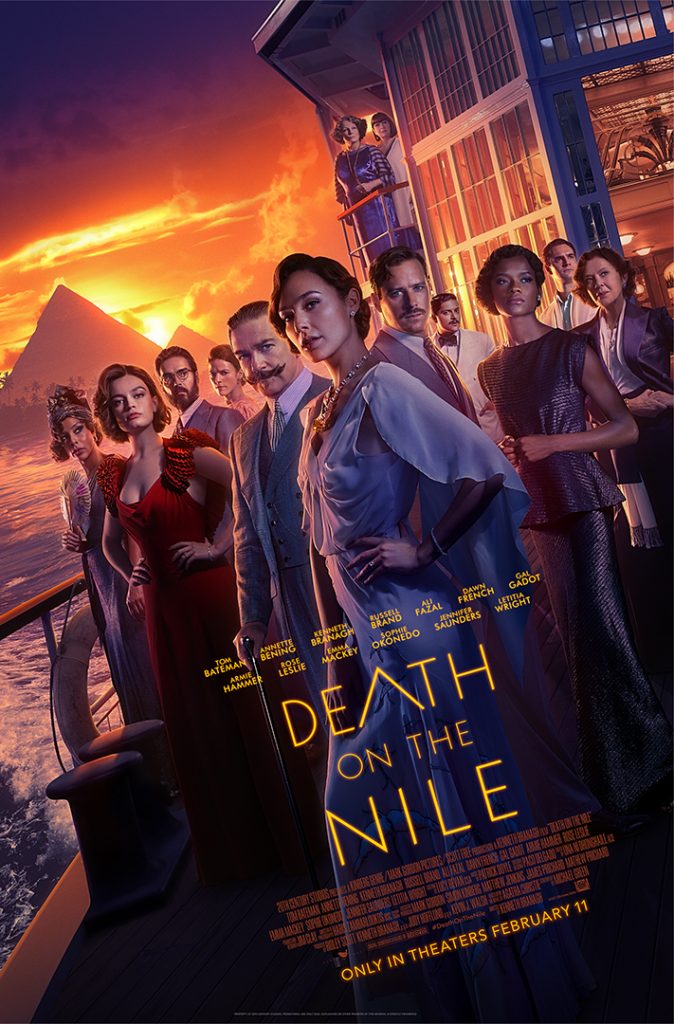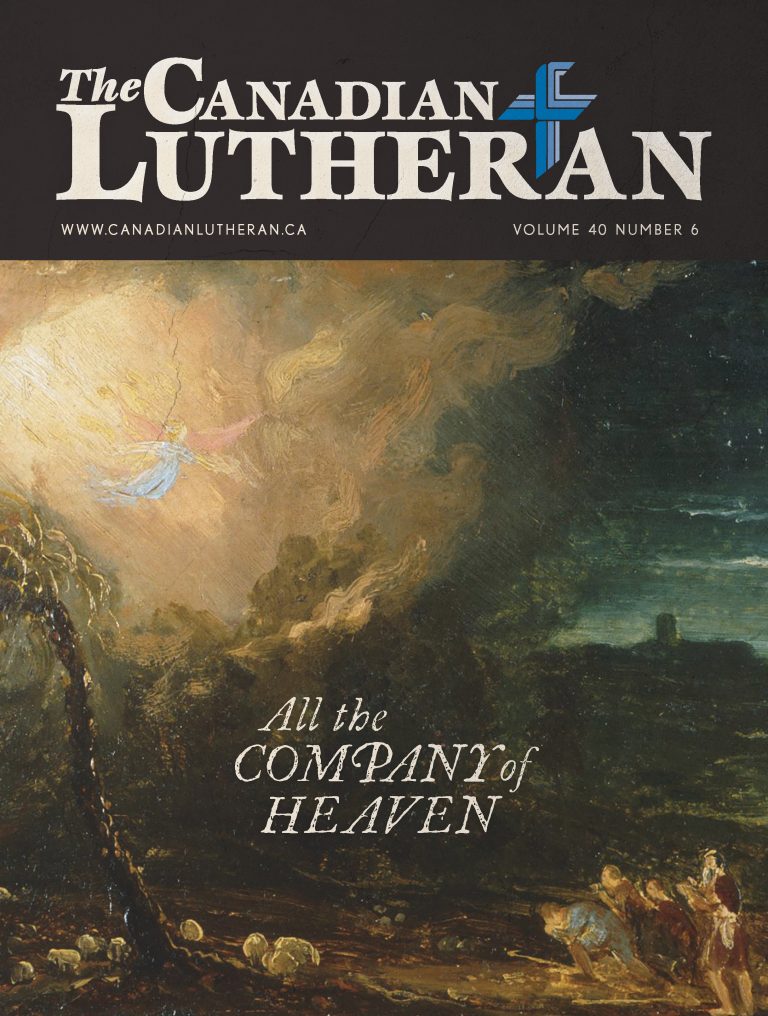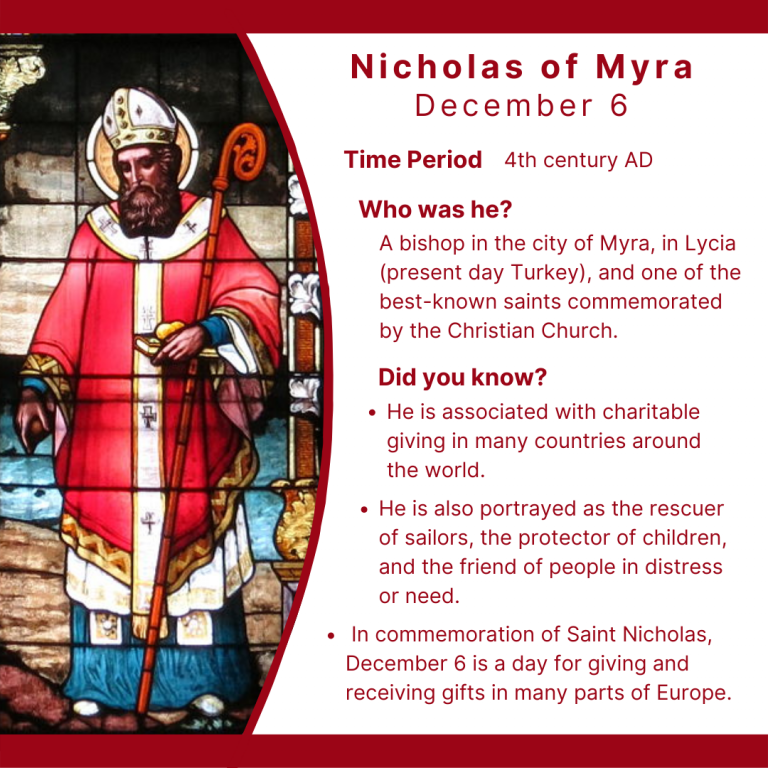Death On the Nile: Poirot A-Woken
 by Ted Giese
by Ted Giese
Agatha Christie’s murder mystery about a beautiful heiress, Linnet Doyle née Ridgeway who is murdered on her honeymoon while traveling down Egypt’s Nile River has received a modern update in Kenneth Branagh’s Death on the Nile. Readers of Christie’s 1937 novel and fans of previous adaptations will recognize the many changes and additions made by screenwriter Michael Green—changes that reflect Hollywood’s current obsession with race, gender, and sexuality.
Kenneth Branagh reprises his role as fictional Belgian detective Hercule Poirot, which he first played in his adaptation of Christie’s Murder on the Orient Express. On a river boat vacation in Egypt, Poirot becomes embroiled in a case that turns from stalking to murder and must uncover the true nature of the homicide with a cast of suspicious characters each with reason to murder newlywed Linnet.
Dogged by her husband Simon Doyle’s jilted former fiancée and one-time close friend, Jacqueline de Bellefort, Linnet confides in Poirot, “When you have money, no one is ever really your friend.” She had previously lamented that de Bellefort was the only one who didn’t care about her money which made their falling out all the more tragic. Apart from the party crashers Poirot and de Bellefort, everyone on the river boat is traveling as part of Linnet’s nuptial entourage. Think of it as an extended wedding reception turned exotic honeymoon—a kind of “lifestyle of the rich and famous” 1920s destination wedding.
The Ridgeway fortune was amassed by Linnet’s deceased father bilking the rich and powerful of their land and capital. His ruthless business practices created many enemies for the newlywed even among her closest friends and family. Her scheming “cousin” and lawyer, Katchadourian, has motive to gain control of the fortune to cover his embezzlement; her godmother Marie Van Schuyler, a Communist sympathiser, loathes what she considers her goddaughter’s ill-gotten wealth; the family of Van Schuyler’s nurse companion Bowers’ was reduced to poverty by the Ridgeway family; even Linnet’s formerly penniless husband Doyle stands to financially gain from her death.
Apart from financial gain, others around Linnet have reason to want her dead. She had ended the engagement of her lady’s maid Louise Bourget’s when she had discovered Bourget’s fiancé was a swindler with great debts leaving Bourget embittered towards her employer; Linnet was once engaged to a Dr. Lord Windlesham whom she jilted in the same way de Bellefort was jilted by Doyle, leaving Windlesham potentially just as jealous and distraught; and then there’s the African American blues singer Salome Otterbourne and her niece manager Rosalie Otterbourne. Years earlier Linnet had publicly slighted them before Rosalie and Linnet became friends at boarding school. The Otterbournes find themselves along for the honeymoon providing musical entertainment because Salome had been playing in the club the night Linnet and Doyle first met. That same night Poirot had observed Linnet Ridgeway’s love-at-first-sight encounter with Simon Doyle who was only recently engaged to her friend Jacqueline de Bellefort.
Rounding out the cast of characters is Poirot’s friendly acquaintance Bouc, a returning character from Murder on the Orient Express who replaces the Col. Race who actually appears in Christie’s novel Death on the Nile. Another addition is Bouc’s cynical widowed mother Euphemia Bouc, who joins the ill-fated wedding party on their Nile River cruise. In this version of the story, Bouc’s mother has secretly retained Poirot to investigate Rosalie Otterbourne, Bouc’s love interest, to determine if she is a suitable future spouse for her son. Euphemia is particularly cynical when it comes to love, even giving an embittered rant against St. Paul’s description of love in 1 Corinthians 13. This plot involving the Otterbournes and Boucs is woven through Branagh and Green’s adaptation providing additional twists and turns.
This delicate balance is sadly not achieved, leaving viewers with a muddled mess more interested in Hollywood’s identity politics than in faithfully adapting the source material. Most modern adaptations of popular novels from the 1930s will struggle with whether or not to include details and dialogue out of step with modern Hollywood sensibilities.
Why the changes? On the one hand, Branagh and Green are faced with the task of making an entertaining film for viewers who may know how the story ends. On the other hand, they need to deliver a film that will satisfy those wishing to revisit Death on the Nile out of nostalgia—a tall order to fill. This delicate balance is sadly not achieved, leaving viewers with a muddled mess more interested in Hollywood’s identity politics than in faithfully adapting the source material. Most modern adaptations of popular novels from the 1930s will struggle with whether or not to include details and dialogue out of step with modern Hollywood sensibilities.
By now most viewers are familiar with diversity casting that opens the door to storylines dealing with contemporary issues like racism, or the recasting of characters to suit LGBTQ interests. A more puzzling and anachronistic historical revision in this film puts women as classic hotel bellhops and as porters and crew on the Karnak River Boat, carrying both luggage and corpses. This is puzzling considering the film is set in 1920s Egypt where cultural norms concerning women would likely preclude them from wearing men’s attire while working blue-collar service and tourism industry jobs. This modern trend to create gender diversity in the workforce of the day repeatedly breaks the viewer’s suspension of disbelief.
Why are these changes even included? Is it simply a reflection of Hollywood’s current values? Is it a critique or condemnation of Christie’s original work? Is it an effort to placate some viewers while indoctrinating others? Or is it a combination of some or all these things? In an AMC promotional interview for the film, Branagh notes his personal interest in Christie’s Poirot novels stems from his mother’s enjoyment of them when he was a child. Whether there are bits and pieces of Christie’s work that he now finds difficult to reconcile with his own values is unclear.
Strip away all the flash and dazzle of Branagh’s film and what lies beneath, even with all of Green’s tinkering, is Christie’s study of driving motive. What makes a murderer?
Regardless, the changes raise the question of whether modern filmmakers have the right to reshape source material as they like. This is a question fans are grappling with over projects like Amazon’s new Rings of Power series, based on J.R.R. Tolkien’s Lord of the Rings books. Similar questions were raised about the 2001 AMC+ miniseries Anne Boleyn. Why develop projects based on the work of individuals like Tolkien, or on historical personages like Anne Boleyn, if they require reinvention or revision? Why not simply use that creative energy to make new creative projects that reflect the ideological convictions of the filmmakers? Is Death on the Nile intended as entertainment or is it being pressed into labour beyond that which Christie had initially envisioned? Inquisitive viewers, if interested in contemplating these points, will certainly have a mystery of their own to unravel.
The screenplay writer Michael Green wrote in a Los Angeles Times that, as a five-year old, he had learned from Guillermin’s 1978 adaptation of Death on the Nile that that good people could be hurt or killed on purpose by other, not-so-good people. He said that “Christie introduced me to the simple fact of murder. She made me see the world was not as benign as I had believed.” And for that, he hated her for years—at least until he worked on adapting Murder on the Orient Express for Branagh. Along with other audience members, Christian viewers will likewise be given opportunity to think about murder in relation to this film and Lutheran viewers will likely have the 5th Commandment in mind:
You shall not murder. What does this mean? We should fear and love God so that we do not hurt or harm our neighbour in his body but help and support him in every physical need.
What Guillermin’s 1978 Death on the Nile revealed to Green is the nature of sin and the problem of evil—a troubling thing for a five-year old. Strip away all the flash and dazzle of Branagh’s film and what lies beneath, even with all of Green’s tinkering, is Christie’s study of driving motive. What makes a murderer? St. James describes it like this: “Each person is tempted when he is lured and enticed by his own desire. Then desire when it has conceived gives birth to sin, and sin when it is fully grown brings forth death” (James 1:14–15). The desires in question swirling around Linnet Doyle are rooted in covetousness. The women around her covet her beauty and her ability to always get her way; the men covet her wealth and power.
Once conceived, these motives give birth to attempted and actual theft and multiple acts of murder. Murder mystery films and novels live in a kind of liminal adjacent space next to true crime documentaries and non-fiction accounts of homicide. While fictional, Christie’s stories of murder provide opportunity to think about the devastating nature of murder and the trail of broken lives and pain left in its wake. Branagh’s film, released around Valentine’s Day, slathers the plot with excess romance and sultry sensuality, but the deeper motivations here are less about lust or love than coveting. Christians are called to nip such temptations in the bud with repentant confession and absolution before they grow, and to instead seek to help their neighbour to keep their inheritance, property, and relationships (see Luther’s Small Catechism on the 9th and 10th Commandments). Poirot provides an important contrast to other characters, because he works to fulfil the commandments—or, at the least, to provide justice by exposing sin and its perpetrators which have brought forth death.
When stripped of its glitz and tinsel, Death on the Nile is rather clunky. Branagh, who is an ambitious director, doesn’t always deliver; for every Henry V or Thor there’s a Mary Shelley’s Frankenstein or Jack Ryan: Shadow Recruit. While not particularly memorable, his 2017 film Murder on the Orient Express was a more solid film by comparison. Even the visual effects here are inconsistent, often giving the film a somewhat fake feel where it’s hard to make sense of depth of field and distances. The poorly executed use of CGI is another one of the film’s odd elements that repeatedly threaten to break the viewer’s suspension of disbelief. It works best when Branagh focuses his camera on the elaborate and detailed Karnak River Boat set which is a true accomplishment in set design almost worth the price of admission.

As for Branagh’s Poirot, he clearly revels in reprising the character, and his performance is one the film’s more enjoyable aspects. But Branagh makes Poirot a character deeply entangled in the plot’s thematic underpinnings, showcasing his own regrets in love, and even giving a back story for Poirot’s splendid moustaches. Emphasizing these points moves Poirot from being a careful investigator in control of his faculties to an overly emotional detective caught up in the distractions littered along the path to the truth.
———————
Rev. Ted Giese is lead pastor of Mount Olive Lutheran Church, Regina, Saskatchewan, Canada; a contributor to The Canadian Lutheran, Reporter; and movie reviewer for the “Issues, Etc.” radio program. For more of his television and movie reviews, check out the Lutheran Movie Review Index.



